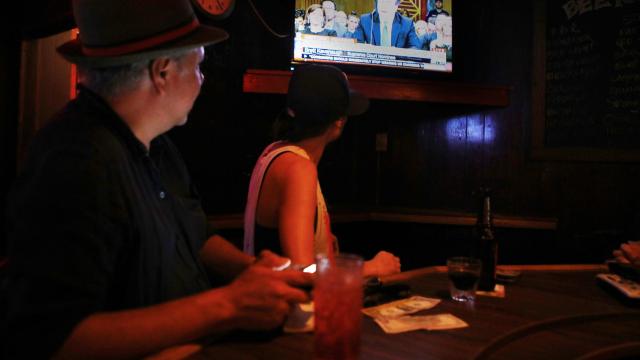When’s the last time you watched TV without pulling out your phone to rage tweet or fall down a Wikipedia-hole inspired by a show?
You’re not the only one who can’t just stare at one device for an extended period of time. The majority of Americans engage with a second screen when they are watching TV, according to a new report by revered internet researcher Mary Meeker.
On Wednesday at Code Conference, Meeker released her annual Internet Trends analysis—the latest iteration of the reports she’s been producing since 1995. As Recode reports, the 333-page slideshow is chock-full of data on things like global internet use (51 per cent of the world logged on last year, up from 49 per cent the previous year); internet ad spending (up 22 per cent last year); our means of communication (increasingly through images); gamer population (grew 6 per cent in 2018 to 2.4 billion people); and online toxicity (42 per cent of teens in the U.S. have been affected by online bullying).
The report also shows that we are spending a crapload of time staring at screens. According to the report, last year Americans spent an average of 6.3 hours a day consuming digital media, mostly on connected devices. That’s a 7 per cent increase from 2017.
The report also shows that last year marked the first time Americans spent more time on their mobile devices than they did viewing TV.
And a lot of that mobile screen-time is taking place during TV screen time. Meeker pulled from Nielsen data to determine that in 2018 about 88 per cent of Americans used a second device when they watched TV in 2018. It seems TVs are no longer capable of fully distracting us from our phones. If you want to stare at a single screen for several minutes, your best bet is going to a theatre where it is still mostly shameful to look at your phone while in the presence of a larger screen.
But if you’re concerned about potential screen-time over-saturation, consider what people are doing on their phones and tablets when they’re also “watching” TV. The Meeker report claims that about 41 per cent of TV viewers used their devices to discuss the show with friends and family, and about 71 per cent of TV viewers used devices to look up information related to what they were watching while they’re watching.
So rather than passively watching TV, people are engaging with others and, more often, doing research based on what they’re watching. Maybe watching Deadwood inspires you to look up South Dakota land rights in the 1800s. Black Mirror might lead to reading about the creeping surveillance state on Gizmodo. When They See Us could lead to you to prepping for the LSAT so you can go to law school and do your part to fix the U.S. justice system.
It could be looking up dumb trivia, or something more important—but we’re increasingly doing more than just wasting away as images flash in front of our faces.
